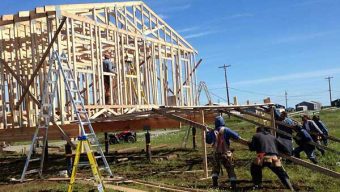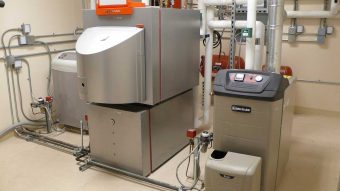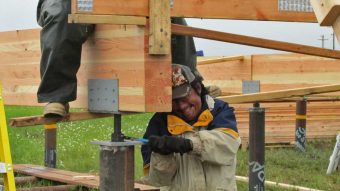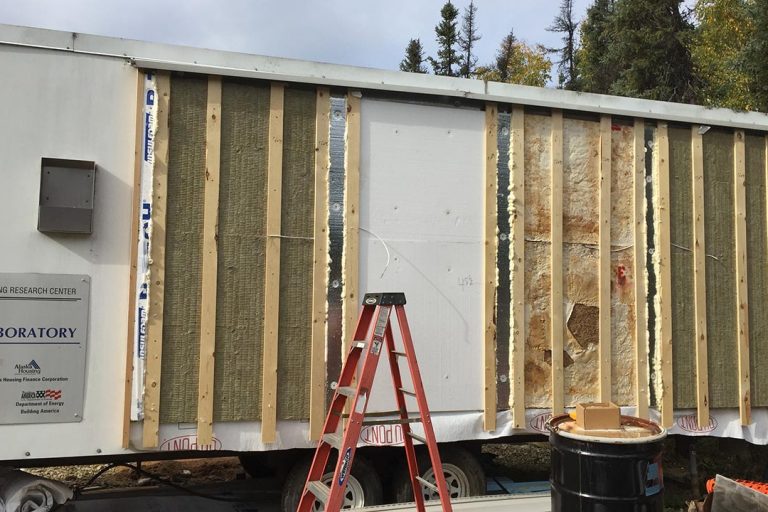
Understanding Your Walls
Because walls typically represent the largest exterior surface area of a home, from an energy standpoint they are the most important part of the building envelope. There are many ways to construct an energy efficient wall, including various types of structural framing, insulation, air and vapor sealing, and more.
One thing that is essential in northern climates is to have a complete thermal break in the walls, which means that the standard stud walls that dominate the housing industry don’t suffice. Generally, a stud wall consists of a structured component filled with insulation. That means, however, that the structure is leaking heat through the stud: on the inside, the two-by-fours are in the warm and at the outside they are in the cold. While that may work in a temperate climate, in cold climates we need to make sure that nothing that touches the inside of the thermal envelope can also touch the outside.
At the Cold Climate Housing Research Center, we test new building techniques and materials to find the most cost-effective, durable, and efficient options for homeowners. Many factors need to be taken into account when designing or choosing a walls system, including local climate, cost, access to materials and equipment, and much more.
Related Resources
| Title | Resource Link |
|---|---|
| Arctic Wall Report | |
| Arctic Wall Snapshot | |
| Cellulose Insulation Snapshot | |
| Durable Envelopes Report | |
| Installing a Vapor Barrier | |
| REMOTE Manual | |
| Vacuum Insulated Panels Report |















